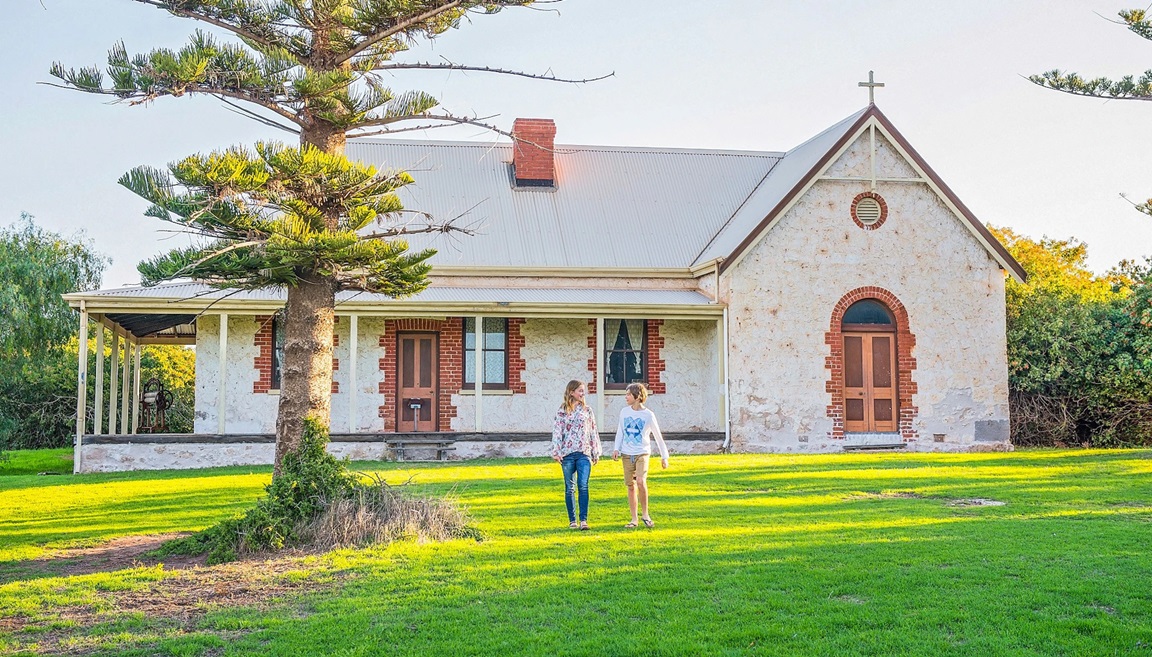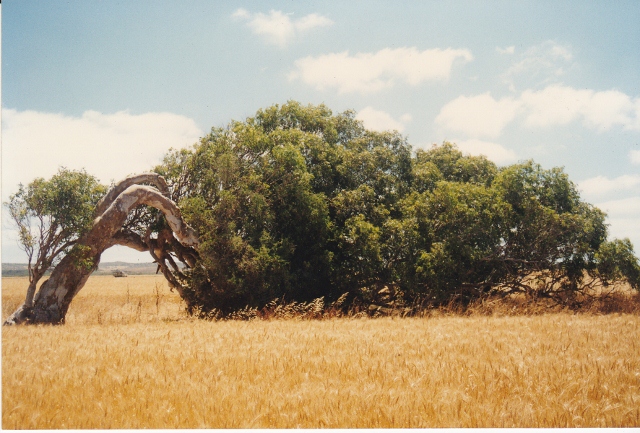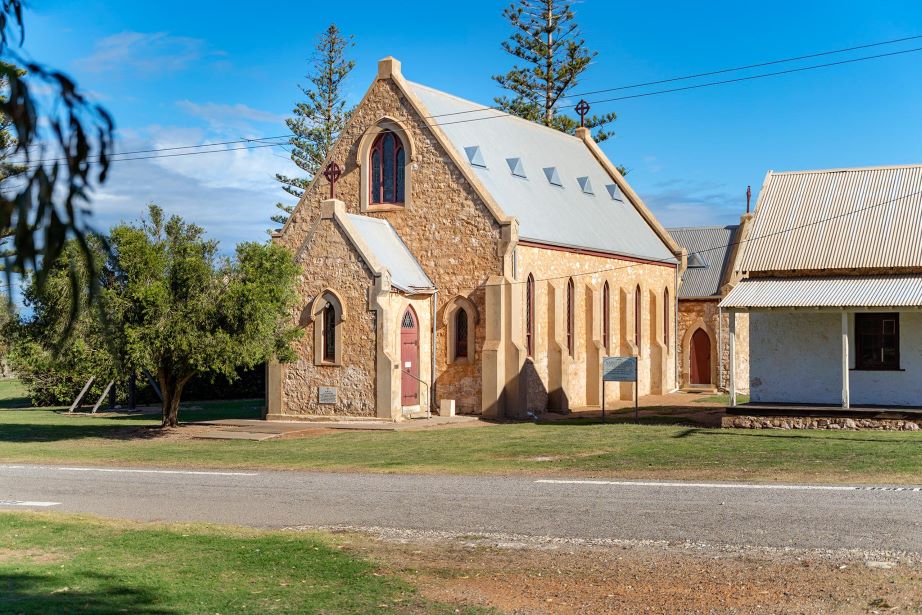
If you haven’t heard of the leaning trees and the unique historical hamlet of Greenough, you’re missing out on one of Australia’s greatest preserved historical towns.
Greenough is one of the country's best preserved historical towns. Dating back to the 19th century, pioneer wheat farmers first settled in the Greenough area in 1858, but a series of hardships like rust and disastrous floods soon meant the town was abandoned for greener pastures.
The appeal of Greenough lies in it’s the pristine preservation of its 19th century historical colonial state. It might be an abandoned ghost town, but walking through the streets amongst buildings like churches, a court house and a police station, there is a sense that the town was built to last for centuries.
At the heart of the town is a collection of eleven buildings including the gaol, courthouse, police station, churches, and a school, all administered by the National Trust. These include:
Prior to the arrival of Europeans, the area was inhabited by the Yamatji and Amangu Aboriginal people.
Greenough is a 4.5 hour drive north from Perth, just sitting 20 minutes away from the city of Geraldton. Cruise down the highway and try and spot the famous Leaning Trees of Greenough.
When visiting the historical town of Greenough, base yourself in the neighbouring city of Geraldton which is just a 20 minute drive away. Geraldton Belair Gardens Caravan Park is in a prime location for you to head out to the historical hamlet of Greenough, and also to explore some must-see attractions of Geraldton.

Greenough Leaning Trees, Greenough Museum and Gardens
Go on a hunt through the Greenough region and you’ll come by the Leaning Trees that are a true wonder to behold. Take a drive along Brand Highway, and you won’t miss these “sideways” growing trees.
A strange natural phenomenon, these leaning trees are caused by the salt being blown in through the winds coming off the Indian Ocean. Now an icon of the Greenough and Geraldton region, be prepared to get out of the car with camera in hand to snap that instaworthy shot of a tree you won’t see anywhere else in the world!
 Greenough Church, National Trust WA
Greenough Church, National Trust WA
Take a drive through the historic Greenough Flats for a history lesson like no other. Step right back into the 19th century on a self-guided stroll through the ruins of this farming community. See how life would have been and walk into 11 of these lovingly restored original buildings.
The Pioneer Museum was built for the miller John Maley by convicts from Port Gregory in 1862 and is now an interactive folk museum concentrating on the agricultural history of the area. It would be easy to imagine what life would have been like with the curated exhibits on show.
Administered by the National trust, the Greenough Pioneer Cemetery is located about 300 metres off the Brand Highway. Used between 1853 – 1981, the cemetery has been carefully restored and is now part of the “Find a Grave” website, where you can find some interesting graves like Mrs Anne Connolly, the first woman to take up land on the Front Flats in her own right.
Clinch's Mill is a late 19th century mill complex built in a Victorian Georgian style. It believed that it was the first purpose built roller mill in Western Australia and the first flour mill to operate in Greenough.
The National Trust notes: "The foundation stone for this Gothic style church was laid in 1867. It was built of limestone by ticket-of-leave convict labour and opened for worship in 1870. Many of Greenough's early settlers were members of the strong Wesleyan community led by the Waldecks, who lived at nearby Mount Pleasant."
Gray's Store is a late 19th century building built with rubble limestone walls, wooden floors and a timber shingle roof. The scale of the building indicates the optimism early settlers had for the region, and the quality of the masonry is an outstanding example of the quality of building work that was being produced in the colony during the years that convict labour was available.
The Hampton Arms was the first hotel built in the Mid-West's Greenough district and has since been listed on the State's Register of Heritage Places. The hotel is currently still functioning as a licensed inn and restaurant and has been lovingly restored by owners Judy and Brian Turnock. One of the only colonial hotels to survive to the present day, the building is an impressive note to the past.
The Walkaway Station building was designed by George Temple Poole and built in 1886. Prior to additions to the original design, the Walkaway Station was designed to be identical to the Claremont Railway Station! Part of a railway precinct which included the station, platform, goods shed, track levers, ramp, wishing well, weighbridge, cabin and loading ramp, the station is one of the earliest Government-built railway complexes.
Now functioning as the Walkaway Station Museum, visit the exhibits to find out more about regional transportation, explore historical memorabilia and records of local history, burials and photographs of the Walkaway region.